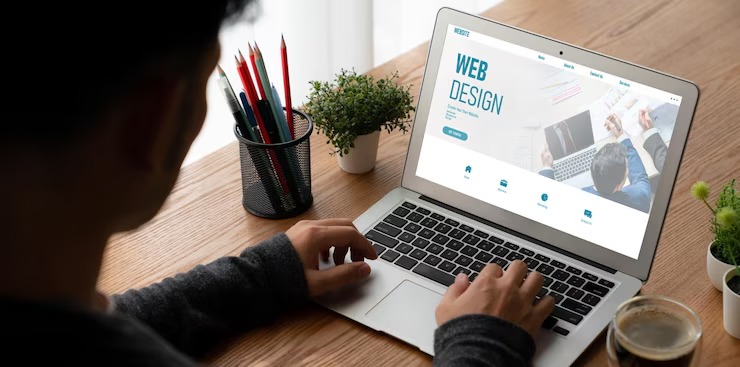WordPress Design Secrets: Create a Stunning Website
WordPress Design Secrets: Create a Stunning Website in 2025
Your website is your digital storefront, and in 2025, a stunning first impression is non-negotiable. Forget outdated themes and clunky layouts; we’re diving into the WordPress design secrets that will captivate your audience and convert visitors into loyal customers. Get ready to elevate your online presence.
Understanding the 2025 Web Design Landscape
The internet is in constant flux. In 2025, certain design principles are now vital for success:
- Minimalism: Clean layouts, ample white space, and strategic use of color are key. Less is truly more.
- Accessibility: Websites must be usable by everyone, including people with disabilities. This isn’t just ethical; it’s good SEO practice.
- Mobile-First Design: The majority of web traffic comes from mobile devices. Your design must prioritize the mobile experience.
- Personalization: Tailoring the user experience based on individual preferences is becoming increasingly important.
- AI Integration: AI-powered design tools and chatbots are streamlining the design process and enhancing user interactions.
Selecting the Right WordPress Theme: More Than Just Aesthetics
Choosing the perfect WordPress theme goes beyond visual appeal. It’s about functionality, speed, and scalability.
- Prioritize Lightweight Themes: Heavy, bloated themes slow down your website, impacting user experience and SEO.
- Look for Responsive Designs: Ensures your site looks great on any device.
- Check for Regular Updates: A theme that’s actively maintained is more secure and compatible with the latest WordPress features.
- Consider Page Builders: Drag-and-drop page builders can simplify the design process, but choose wisely. Some can create code bloat. Elementor and Beaver Builder are popular options, but always test their performance.
Top Theme Recommendations for 2025:
While specific themes are always evolving, look for options that emphasize speed, accessibility, and customization. GeneratePress, Astra, and Kadence are often cited as excellent choices.
Mastering WordPress Customization: Unleashing Your Brand’s Identity
A pre-built theme is just the foundation. Customization is where you inject your brand personality and create a unique user experience.
Color Palettes: Evoking Emotion and Brand Recognition
Your color palette should be consistent with your brand identity and evoke the desired emotions in your visitors.
- Limit Your Palette: Stick to 2-3 primary colors and 1-2 accent colors.
- Consider Color Psychology: Different colors evoke different emotions. Research what’s appropriate for your brand.
- Use a Color Palette Generator: Tools like Adobe Color or Coolors can help you create harmonious color schemes.
- Ensure Sufficient Contrast: Vital for accessibility, ensuring text is readable against the background.
Typography: Guiding the Reader’s Eye
Typography plays a crucial role in readability and overall design aesthetics.
- Choose Legible Fonts: Select fonts that are easy to read on screen.
- Use Font Pairings: Combine a display font (for headings) with a body font (for paragraphs). Google Fonts offers a wide selection.
- Maintain Consistent Hierarchy: Use heading tags (H1-H6) to structure your content logically and improve SEO.
- Pay Attention to Line Height and Letter Spacing: These factors significantly impact readability.
Image Optimization: Visual Appeal Without Sacrificing Speed
High-quality images are essential for visual appeal, but they can also slow down your website.
- Compress Images: Reduce file sizes without compromising quality using tools like TinyPNG or ImageOptim.
- Use the Right File Format: JPEG for photographs, PNG for graphics with transparency, and WebP for optimal performance.
- Optimize Alt Text: Descriptive alt text improves accessibility and helps search engines understand your images.
- Consider a CDN: A Content Delivery Network (CDN) stores your images on multiple servers, delivering them faster to users around the world.
Essential WordPress Plugins for Enhanced Design and Functionality
Plugins extend the functionality of WordPress, allowing you to add features and customize your website without coding.
Must-Have Plugins:
- Security Plugin: (e.g., Wordfence, Sucuri) Protects your website from malware and hacking attempts.
- SEO Plugin: (e.g., Yoast SEO, Rank Math) Optimizes your website for search engines.
- Caching Plugin: (e.g., WP Rocket, LiteSpeed Cache) Improves website speed by caching static content.
- Contact Form Plugin: (e.g., Contact Form 7, WPForms) Enables visitors to contact you.
- Image Optimization Plugin: (e.g., Smush, ShortPixel) Automatically compresses and optimizes images.
Design-Focused Plugins:
- Page Builders: (e.g., Elementor, Beaver Builder) Drag-and-drop interfaces for creating custom layouts.
- Animation Plugins: (e.g., LottieFiles, GreenSock (GSAP)) Adds subtle animations to enhance user engagement. But use sparingly.
- Accessibility Plugins: (e.g., Accessibility Suite) Improves website accessibility for users with disabilities.
Creating Engaging User Experiences
A beautiful website is useless if it doesn’t provide a positive user experience.
- Intuitive Navigation: Make it easy for visitors to find what they’re looking for.
- Clear Call to Actions (CTAs): Guide visitors towards desired actions, such as making a purchase or contacting you.
- Fast Loading Speeds: A slow website will frustrate visitors and hurt your SEO.
- Mobile-Friendly Design: Ensure your website looks and functions flawlessly on all devices.
- Interactive Elements: Consider adding micro-interactions or animations to make your website more engaging.
Implementing Micro-Interactions and Animations (Subtly!)
Micro-interactions and animations can add a touch of delight to your website, making it more engaging and memorable.
Examples of Effective Micro-Interactions:
- Button Hover Effects: Changing the appearance of a button when a user hovers over it.
- Loading Animations: Providing visual feedback while content is loading.
- Scroll-Triggered Animations: Animating elements as the user scrolls down the page.
Important Considerations:
- Don’t Overdo It: Too many animations can be distracting and slow down your website.
- Keep it Consistent: Use animations consistently throughout your website to maintain a cohesive design.
- Prioritize Performance: Choose animations that are lightweight and don’t impact website speed.
Accessibility: A Non-Negotiable Design Element
Accessibility is about making your website usable by everyone, regardless of their abilities. It’s not just ethical; it’s also good for business and SEO.
Key Accessibility Considerations:
- Semantic HTML: Use HTML tags correctly to structure your content logically.
- Alt Text for Images: Provide descriptive alt text for all images.
- Sufficient Color Contrast: Ensure sufficient contrast between text and background colors.
- Keyboard Navigation: Make sure your website can be navigated using a keyboard alone.
- Screen Reader Compatibility: Test your website with a screen reader to ensure it’s accessible to visually impaired users.
Optimizing for Core Web Vitals: Speed and Performance Matters
Google’s Core Web Vitals are a set of metrics that measure the user experience of a website. Optimizing for these metrics is crucial for SEO.
The Three Core Web Vitals:
- Largest Contentful Paint (LCP): Measures the time it takes for the largest content element on a page to become visible. Aim for an LCP of 2.5 seconds or less.
- First Input Delay (FID): Measures the time it takes for a user to interact with a page. Aim for an FID of 100 milliseconds or less.
- Cumulative Layout Shift (CLS): Measures the amount of unexpected layout shifts on a page. Aim for a CLS of 0.1 or less.
Strategies for Improving Core Web Vitals:
- Optimize Images: Compress images and use the correct file format.
- Minimize HTTP Requests: Reduce the number of files that need to be loaded.
- Leverage Browser Caching: Store static content in the user’s browser.
- Defer Offscreen Images: Load images only when they are visible in the viewport.
- Optimize CSS and JavaScript: Minify and compress CSS and JavaScript files.
Future-Proofing Your WordPress Design
The web is constantly evolving, so it’s important to future-proof your WordPress design.
- Stay Updated: Keep your WordPress core, themes, and plugins up to date.
- Embrace New Technologies: Explore new technologies like AI and virtual reality.
- Prioritize Accessibility: Accessibility will become even more important in the future.
- Focus on User Experience: Always prioritize the user experience.
- Monitor Performance: Regularly monitor your website’s performance and make adjustments as needed.
FAQs: WordPress Design in 2025
- Q: How often should I redesign my website?
- A: A major redesign every 2-3 years is recommended, but continuous optimization is key.
- Q: Is a page builder necessary?
- A: Not necessarily. It depends on your skills and needs. A well-coded theme can be just as effective, or more, than a page builder-dependent site. However, if you are not a web developer page builders are the way to go!
- Q: What are the biggest web design trends of 2025?
- A: Minimalism, accessibility, AI-powered design, personalized experiences, and immersive storytelling.
How-To: Test Your Website’s Mobile-Friendliness
- Use Google’s Mobile-Friendly Test Tool: Enter your website’s URL and run the test.
- Check Responsiveness on Different Devices: Use a tool like BrowserStack to test your website on various screen sizes.
- Manually Test on Your Own Devices: Load your website on your smartphone and tablet and navigate through the pages.
Implementing these WordPress design secrets will position your website for success in 2025 and beyond. Remember that design is an ongoing process, not a one-time event. Stay informed, experiment with new ideas, and always prioritize the user experience.


